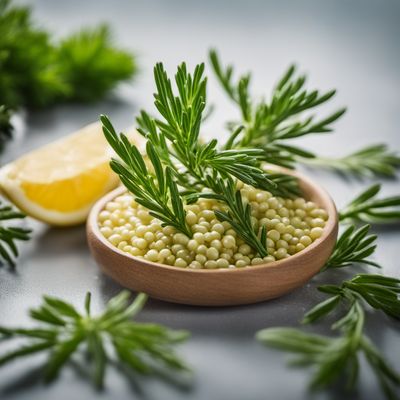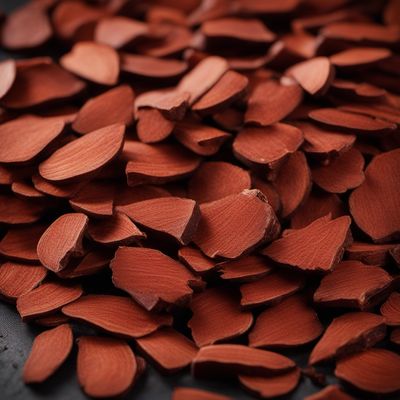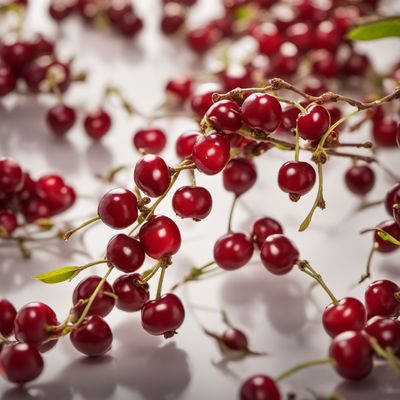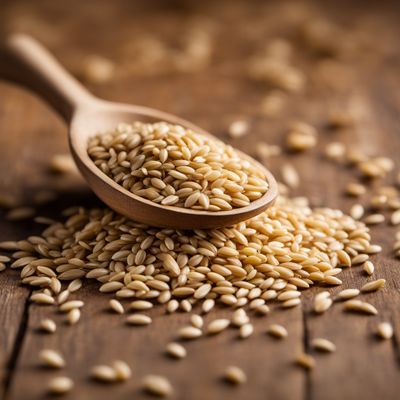
Ingredient
Soap-bark tree (infusion bark)
The Natural Cleanser: Soap-Bark Tree
The infusion bark of the soap-bark tree is rich in saponins, which are natural compounds that create a soapy lather when mixed with water. It has a mild, earthy aroma and a slightly bitter taste. The bark is typically dried and ground into a fine powder for use in soap-making or as a natural foaming agent in beverages and food products.
Origins and history
Soap-bark tree is native to the central and southern regions of Chile, where it has been used by indigenous communities for centuries. It has a long history of being used as a natural cleanser and foaming agent in traditional medicine, as well as in the production of soaps and detergents. The tree's bark is sustainably harvested to ensure its availability for future generations.
Nutritional information
Soap-bark tree infusion bark is low in calories and fat, making it a suitable ingredient for those watching their weight. It also contains saponins, which have been associated with various health benefits, including anti-inflammatory and antioxidant properties.
Allergens
Soap-bark tree infusion bark does not typically pose any allergenic risks, but individuals with known allergies to soap or detergent products should exercise caution.
How to select
When selecting soap-bark tree infusion bark, look for a reputable supplier that sources sustainably harvested bark. The bark should be dry, free from mold or moisture, and have a fresh, earthy scent. Opt for organic or wildcrafted options whenever possible.
Storage recommendations
To maintain the freshness and quality of soap-bark tree infusion bark, store it in an airtight container in a cool, dry place away from direct sunlight. Proper storage will help preserve its potency and extend its shelf life.
How to produce
Soap-bark trees can be grown from seeds or propagated through cuttings. They require a well-draining soil and thrive in temperate climates with mild winters. However, due to their large size, they are more commonly found in their natural habitat rather than being cultivated in home gardens.
Preparation tips
Soap-bark tree infusion bark can be used to create natural soaps, shampoos, and body washes. It can also be added to beverages like root beer or herbal teas for a foamy texture. Additionally, it can be used as a natural emulsifier in certain recipes, such as vegan mayonnaise or salad dressings.
Culinary uses
Soap-bark tree infusion bark is commonly used in the production of natural soaps, detergents, and cosmetics. It is also utilized in the food and beverage industry as a natural foaming agent and emulsifier. Additionally, it has traditional medicinal uses in various cultures around the world.
Availability
Soap-bark tree is native to the central and southern regions of Chile, where it is commonly found in the wild. It is also cultivated in other parts of the world, including the United States and Europe, for its commercial applications.
More ingredients from this category » Browse all

Condurango (infusion bark)
The Enigmatic Condurango: A Bark with a Story

Fir (infusion shoots)
Exploring the Aromatic World of Fir Infusion Shoots

Horse-chestnut (infusion seeds, bark)
The Majestic Remedy

Fragrant sumac (infusion bark)
The Aromatic Essence: Fragrant Sumac

Red sandalwood (infusion bark, wood)
The Scarlet Elixir

Cocoa (infusion husks)
The Essence of Cocoa Infusion Husks

Cupuaçu
The Exotic Delight: Cupuaçu - A Tropical Treasure for Culinary Adventures

Quassia (infusion bark, wood)
Bitter Elixir from Nature's Pharmacy

Sour cherry (infusion stems)
The Tangy Elixir: Sour Cherry Infusion Stems

Sweet corn (stigmas styles)
The Golden Threads: Sweet Corn Stigmas Styles

Hibiscus (infusion seeds)
The Vibrant Infusion

Blond psyllium (infusion seeds, husks)
The Fiber Powerhouse: Unveiling the Secrets of Blond Psyllium